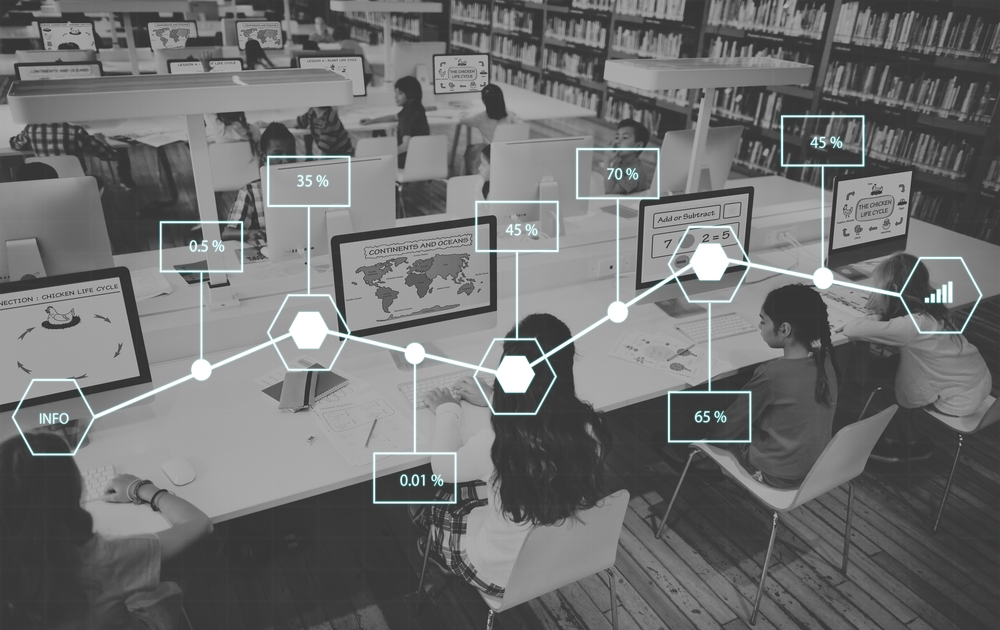1 min read
Exploring data strategies and challenges for multi-academy trusts
One of the key areas involved in academy management is data. For any organisation, in any sector, data underpins almost all aspects of their...
3 min read
Richard Sambrook Smith 28-Sep-2023 12:01:21

Digital platforms are increasingly being used to deliver learning resources to students across all levels of education. Whether it be 'emergency' induced (snow days, sickness or RAAC response), a drive to support post-pandemic catch-up or part of a thought-out plan to increase the effectiveness of curriculum delivery, there has been a 161% increase in the size of the online education market since 2017.
However, the adoption of e-learning and the digital access tied into it raises concerns over cyber security in a day and age where the education sector is particularly vulnerable with more sensitive information being stored and shared online. While significant steps are being taken to provide schools with the best protection possible, the issues with cyber security often arise due to the meeting point between technology, processes and people.
Cyber security plays a vital role in e-learning education, as it safeguards the integrity, confidentiality, and availability of information but perhaps more importantly helps to keep children and young people safe. Educational institutions deal with vast amounts of personal data, and some of it is classified as sensitive, particularly when it pertains to at-risk or looked-after children. Without proper cyber security measures in place, this delicate information becomes vulnerable to access from bad actors and adds additional safeguarding considerations to an already complex threat landscape.
1. Phishing attacks and email scams
Cybercriminals often disguise themselves as legitimate institutions or individuals to trick students and teachers into revealing sensitive information, such as login credentials or financial details. These attacks usually involve deceptive emails, messages, or links that lead unsuspecting victims to malicious websites or fraudulent platforms. Once the information is obtained, it can be used for identity theft, financial fraud, or other malicious activities.
The most effective way of avoiding these threats is through cyber education and training. Being able to identify the signs of such threats means they can be avoided, reported and learned from. Email clients used by schools should have robust email filtering systems which will often automatically detect phishing however there are always some that get through, especially as they continue to develop malicious practices.
2. Data breaches and unauthorised access
Due to the vast amount of data stored in e-learning systems, cybercriminals are constantly seeking vulnerabilities to exploit. A successful data breach can result in the theft or manipulation of personal data, academic records, and even financial transactions. When a breach occurs, the costs associated can skyrocket and lead institutions into financial trouble, especially if a breach is significant and impacts multiple schools.
To prevent data breaches and unauthorised access, multiple security measures can be taken that aim to protect the data by ensuring it's inaccessible to those that aren’t unauthorised, or in the case of being breached, it’s entirely unusable. This is achieved by having robust access controls such as single sign-on, two-factor authentication, secure encryption and regular data audits. Responsibility also falls upon staff and students to safeguard their login credentials and keep to secure practices when accessing e-learning platforms.
3. Malware and ransomware threats
Malware refers to malicious software designed to disrupt computer systems, steal information, or gain unauthorised access. Ransomware, a type of malware, encrypts files and demands a ransom from the victim to restore access. Many UK educational institutions have fallen foul of a Ransomware attack in recent months, resulting in a loss of digital access for educators and learners and huge time and expense lost within the institution to remediate and regain control of the IT infrastructure. These threats can infiltrate e-learning platforms through websites, downloads, or email attachments, and they are the number one type of cyber threat to the education sector. Once inside the system, they can spread rapidly, causing extensive damage to systems.
To mitigate the risk of malware and ransomware threats, antivirus software, firewalls, and regular system updates are carried out with the aim of stopping malware before it has a chance to execute. System updates specifically are a common cause of malware, as these threats are often designed to compromise outdated systems. This is why IT strategy audits are so important, as they identify areas of weakness and vulnerabilities.
To mitigate the risks of a Malware or Ransomware breach, a robust backup and recovery plan is essential, as even the most rigorous technical and human safeguards cannot provide guaranteed protection against bad actors.
As e-learning continues to thrive, addressing cyber security concerns becomes paramount for schools and MATs. By understanding and proactively addressing the major cyber security concerns in e-learning education, we can create a secure virtual learning environment for staff and students across all education levels. At Novatia, we specialise in IT solutions for schools and MATs, with expertise in cyber security for providing recommendations, audits and consultancy services to those in need. Get in touch here for a friendly chat about how we can help you or, why not take a look at our free guide on improving cyber security vigilance in schools and trusts?

1 min read
One of the key areas involved in academy management is data. For any organisation, in any sector, data underpins almost all aspects of their...

Tick tock, tick tock … the EU’s General Data Protection Regulation (GDPR) is creeping nearer. As politicians continue to thrash out the UK’s future...
.jpg)
We meet many school and MAT leaders who want to improve their ICT, make it more effective, and ensure it really does help them achieve their...